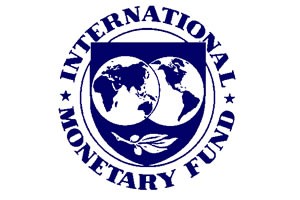


ArmInfo. The IMF predicts GDP growth in Armenia in 2017 by 3.5% with a slowdown in 2018 to 2.9%, against the actual growth of 0.2% in 2016. This is stated in the IMF's October report "Prospects for the Development of the World Economy: Looking for Sustainable Growth: Recovery in the Short-term, Long-Term Challenges" (World Economic Outlook, October 2017. Seeking Sustainable Growth: Short-Term Recovery, Long-Term Challenges).
At consumer prices in Armenia, the IMF forecasts inflation of 1.9% for 2017 with an acceleration to 3.5% in 2018, against actual deflation of 1.4% in 2016. The deficit of the current balance account will make 3.6% of GDP in 2017, but in 2018 it will decrease to 3.2% of GDP, against the actual 2.3% in 2016. The unemployment rate in Armenia will increase in 2017 to 18.9% and will be delayed at this level in 2018, against the actual 18.8% in 2016.
According to the GDP of Russia, the IMF predicts an exit from the 0.2% decline in 2016 by 1.8% growth in 2017 with a slowdown to 1.6% in 2018. At consumer prices in Russia, the IMF expects inflation to slow from 7% in 2016 to 4.2-3.9% in 2017-2018. The surplus of the current balance account in Russia will increase from 2% of GDP in 2016 to 2.8-3.2% in 2017-2018. The unemployment rate in Russia, as in 2016, in 2017-2018 will remain at the level of 5.5%.
For the neighboring countries of Georgia and Azerbaijan, the IMF's forecasts are very different. Thus, GDP growth in Georgia is expected to increase by 4% in 2017 with an acceleration to 4.2% in 2018 (against 2.7% growth in 2016), while in Azerbaijan GDP in 2017 will be kept in decline by 1% (against a 3.1% decline in 2016) with an output in 2018 at 1.3% growth. At consumer prices, inflation is expected in these countries, in particular, in Georgia, the acceleration from 2.1% in 2016 to 6% in 2017 with a slowdown to 3% in 2018, and in Azerbaijan - a slowdown from 12.4% in 2016 to 12% in 2017 and up to 8% in 2018. In Azerbaijan, the balance of the current account balance with minus 3.6% of GDP in 2016 will reach a positive 1.9% in 2017 with a further increase to 2.5% in 2018, while in Georgia this figure will remain at minus level with a downward trend - from 13.3% in 2016 to 11.9% in 2017 and to 10.7% in 2018. The unemployment rate in Azerbaijan, as in 2016, will remain at 6% in 2017-2018, and there is no forecast for Georgia (against 11.8% in 2016).
In total for the CIS (including Georgia and Ukraine), the IMF predicts GDP growth in 2017-2018 by 2.1% (against 0.4% in 2016), and inflation needs in 2017-2018 at a level of 5.8-5, 2% (against 8.3% in 2016). Namely, in the energy exporting countries (Russia, Kazakhstan, Uzbekistan, Azerbaijan, Turkmenistan), the IMF predicts GDP growth by 2.1-2% in 2017-2018 (against 0.3% in 2016), and inflation is required in 2017-2018 for level of 5.2-4.7% (against 7.9% in 2016), and in the energy importing countries (Ukraine, Belarus, Georgia, Armenia, Tajikistan, Kyrgyzstan, Moldova), GDP growth is projected in 2017-2018 at 2.1 -2.7% (versus 1.2% in 2016), and inflation in 2017-2018 is at the level of 10-8.3% (against 11% in 2016).
In the Caucasus and Central Asia, the IMF predicts GDP growth in 2017-2018 by 3.6-3.7% (against 2.5% in 2016), and inflation in 2017-2018 is estimated at 8.8-7.8% ( against 10.4% in 2016). Among the CIS countries, according to the forecasts of the IMF, the highest GDP growth in 2017-2018 will be provided by Turkmenistan - 6.5-6.3% and Uzbekistan - 6%, while in 2016 Uzbekistan was leading in terms of GDP growth rate - 7.8%, after which was followed by Tajikistan - 6.9% and Turkmenistan - 6.2%.
Note that according to the previous IMF forecast, Armenia's GDP growth in 2017 would have been 2.9%. According to the World Bank forecast, the GDP growth in Armenia is expected to be 2.7% in 2017, with the acceleration of the rate in 2018 to 3.1%, in 2019 - up to 3.4%. According to the forecast of the EDB in 2017, the GDP of Armenia is expected to grow by 2.9%, the Asian Development Bank - by 2.2%. Fitch improved the forecast for GDP growth in Armenia in 2017 from the previous 2.1% to the current 3.4% with an acceleration to 3.6% in 2018. The state budget of Armenia for 2017 laid the GDP growth by 3.2%, but the government voiced a 5% growth. According to the updated forecast of the Central Bank, Armenia's GDP growth in 2017 will be 3.9-4.8%. According to the National Statistical Service of Armenia, Armenia's GDP growth slowed to 0.2% in 2016 from 3.2% in 2015, and in January-August 2017 - 5.5% per annum (against 2.4% in the same period in 2016).